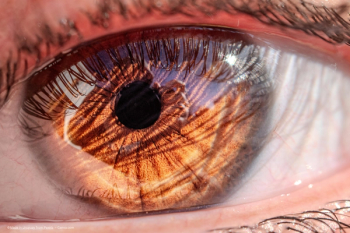
A new modifiction of trabeculectomy
A new technique which was found to improve surgical results for trabeculectomy
Medically uncontrolled primary open-angle glaucoma (POAG) cases were included in the study as group 1. Baseline examinations included: BCVA, IOP measurement with an applanation tonometer, biomicroscopy, gonioscopy and funduscopy. Visual fields, OCT and HRT examinations were also obtained as needed.
As a surgical technique, we formed a fornix-based conjunctival flap in the superior quadrant. After the dissection of a superficial limbus-based square shaped 4mm × 4mm scleral flap, a second deep scleral flap about 3mm × 3mm was carefully dissected. Schlemm's canal was deroofed and the deep scleral flap excised after Descement's membrane was reached. At that stage, an inferotemporal clear corneal side-port was created with a 20 G MVR knife, an anterior chamber maintainer (ACM) was positioned and kept closed. Following the excision of trabeculum tissue, peripheral iridectomy was performed. Superficial scleral flap was sutured with a 10/0 monofilament suture at the corners. Drainage of balanced salt solution through the ACM was allowed and flow of BSS under the flap was observed. Depending on the amount of filtration, sutures were adjusted in number (between 2 to 6) and tension. Tenon and conjunctiva were sutured with 8.0 vicryl and a well formed bleb was observed at the end of the surgeries.
Newsletter
Get the essential updates shaping the future of pharma manufacturing and compliance—subscribe today to Pharmaceutical Technology and never miss a breakthrough.








































